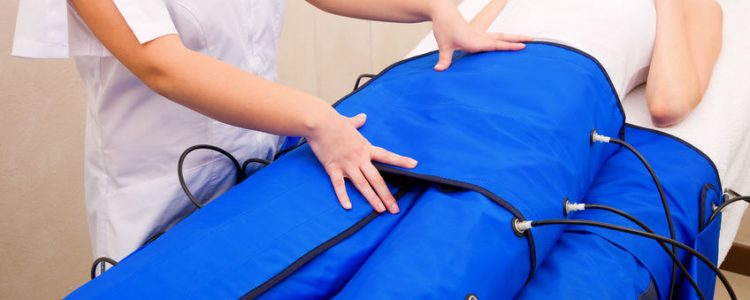Overview of the lymphatic system
Almost every part of the human body is supplied with the lymphatic system. The lymphatic system is made of a complex network of nodes filled with fluid, organs, glands, and vessels. Even though you can’t see your lymphatic system or feel it, it is one of the most vital systems in the human body. It serves as a major pathway for detoxification, flushing out environmental toxins together with body waste.
So, how does your lymphatic system work? It simply carries toxins away from your body and into the general circulation. The fluids of the lymphatic system must maintain its flow to ensure that nutrients and oxygen get to the tissues via the circulatory system, and also so that the wastes can be flushed out from the tissues.
It is quite easy for the lymphatic system to become sluggish – this happens when there is a lot of toxic debris in it. Factors that contribute to sluggishness or congestion of the lymphatic system include constipation, poor nutrition, environmental toxins, injuries, leading a sedentary lifestyle, stress, aging, and hormonal imbalances.
A clogged lymphatic flow results in compromised immunity and disease, as well as edema (retention of fluid), cellulite, fatty deposits, and chronic pain. It can also be a cause of sinusitis, eczema, swelling of the ankles, eyes, and glands, arthritis, throat problems, colds, ear and sinus infections, pneumonia, bronchitis, and tonsillitis.
What is lymphatic drainage?
Lymphatic drainage was developed by Estrid and Emil Vodder, both Danish Physicians in the 1930s. The purpose of lymphatic drainage is to stimulate the flow of lymph. Lymph is the fluid responsible for the transportation of oxygen, white blood cells, oxygen, and nutrients to your body tissues. Other names for lymphatic drainage include lymphatic massage or manual lymph drainage.
A pressotherapy applicator is used to perform lymphatic drainage. The pressotherapy applicator stimulates the lymphatic system via compression and decompression of a target region of the body. This will boost the circulation and flow of blood to the region. Also, there’s a relaxing of the nervous system. Stimulation of lymph reduces the number of toxins and liquids from the affected area. Manual massage techniques are also a component of pressotherapy. This involves using long, rhythmic but gentle strokes to enhance the stimulation.
Your lymph system acts as a component of your immune system. It fights infections. The lymph on its own is a clear fluid that carries oxygen and nutrients to every cell of the body. It also extracts toxins from the cells and flushes them out through the lymph nodes. Movement of the lymph around the body is made possible by pressure from muscle movement and the blood pressure, so this process is facilitated by lymph drainage.
Benefits of lymphatic drainage
Because of the lymph us important for the proper functioning of the immune system, enhancing its flow through lymphatic drainage has many health benefits. These include:
- Reduced retention of liquids: because the lymph is not pumped throughout the body like blood, assuming a state of immobility for long periods can drastically reduce lymph flow while also causing the hands and feet to swell.
- It enhances weight loss: a lymphatic system that flows without obstruction boosts metabolism and so you will burn your calories faster and more efficiently.
- Helps to fight infections: lymphatic drainage reduces the risk of getting a cold or other viruses. It also helps with faster recovery.
- Improves GIT function: treatments targeted at the abdomen can stimulate lymph passage in the bowel which in turn helps with constipation and other related issues.
Lymphatic drainage also adds to a person’s beauty. Here’s how…
- It improves the texture of one’s skin – recall that manual massage is a component of lymphatic drainage. Manual massage reduces puffiness and swelling. It also improves pores.
- It reduces cellulite: the increased flow of blood and circulation degrades and flushes out the toxins which are major contributors to the appearance of cellulite.
- Reduces scar tissue and stretch marks
How long does it take the results to show up?
This varies depending on the target areas and the individual. Typically, you will need more than a session to see significant results. We always recommend a course, but when you visit, we will create a plan of treatment that suits your condition.
There are a few factors you should take into consideration before doing a lymphatic drainage therapy
Anyone can undergo lymphatic drainage therapy, but it may be contraindicated in some medical conditions. Among these conditions are:
- Deep vein thrombosis
- Cancer
- Pregnancy
- Heart disease, use of a pacemaker or other heart conditions
If you are not sure whether you are suitable for this therapy or not, please reach out to us and we will gladly answer all your questions. If you have any underlying medical condition, or you have some allergies or are currently on medications, please let us know during your consultation.
A few tips to note before treatment
The following are important tips that will be helpful for clients who wish to undergo lymphatic drainage therapy:
- You’ll most likely feel thirsty after your treatment. Ensure that you drink lots of water on the days of treatment. Also, drink water daily as this helps to flush out your system.
- Lymphatic drainage therapy is a non-invasive treatment, but you experience some tiredness after each therapy session. After treatment, avoid physically-demanding tasks and exercises.
- Stay active in between sessions by doing gentle exercises and living a healthy life. This will boost your results.
So, we have outlined the basics of lymphatic drainage therapy, also known as pressotherapy. We are sure that you’ve been well-informed on the benefits of lymphatic drainage therapy both to health and beauty.

